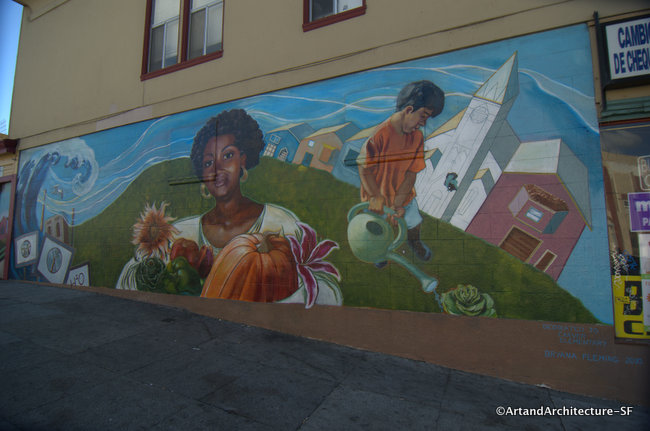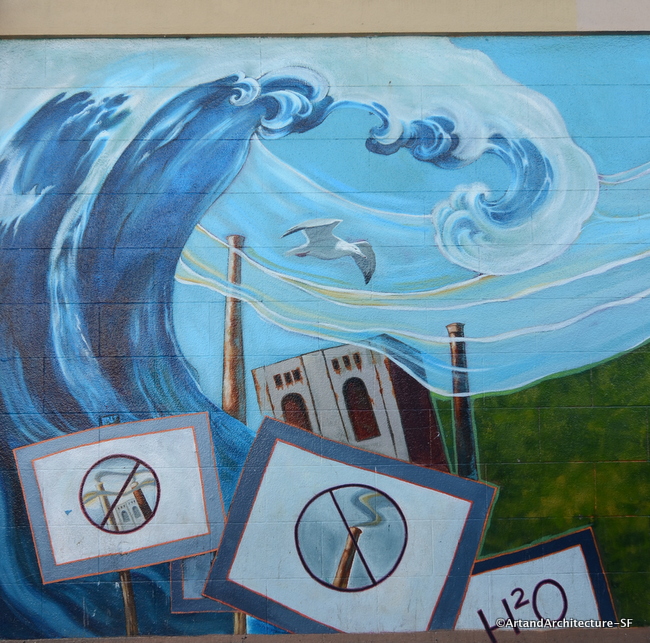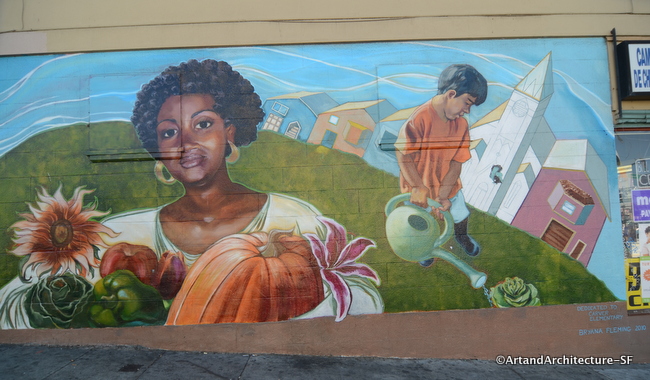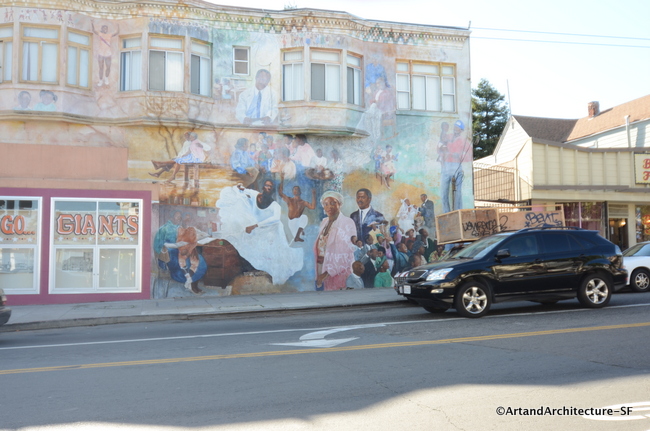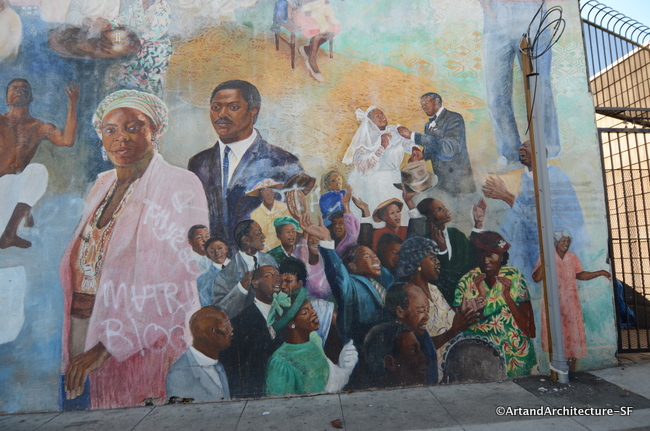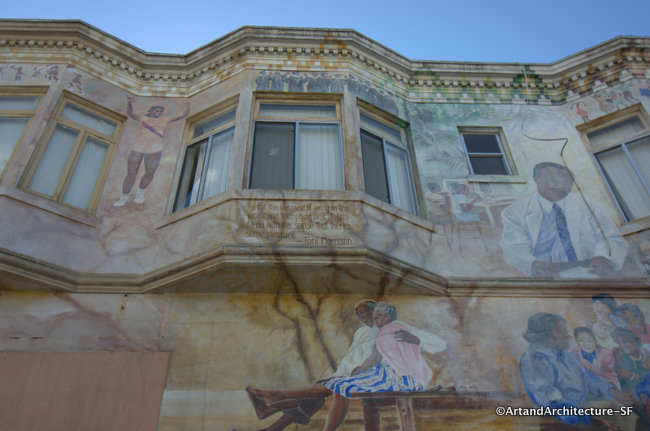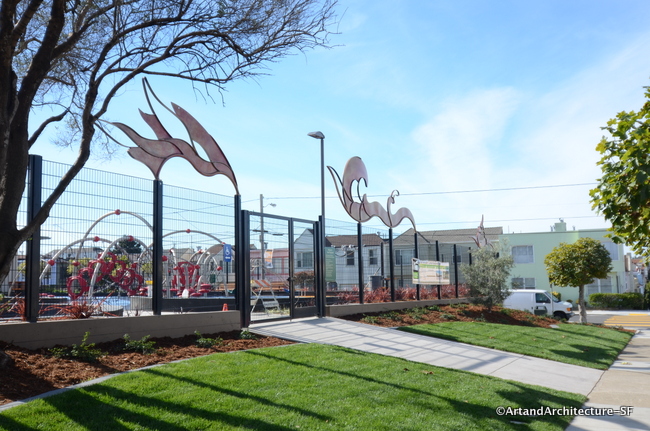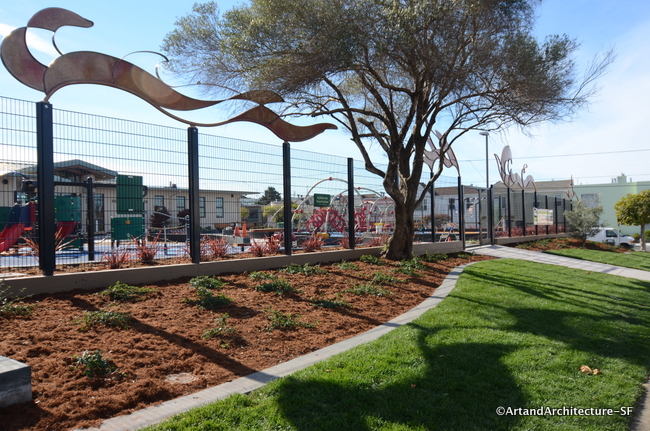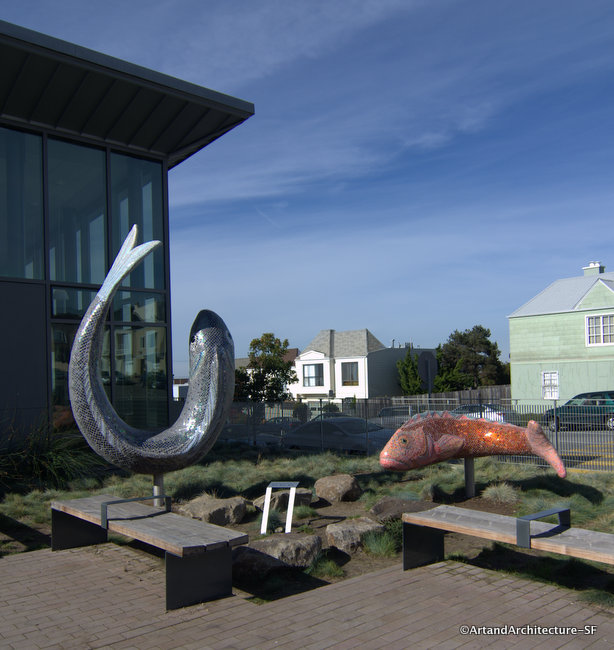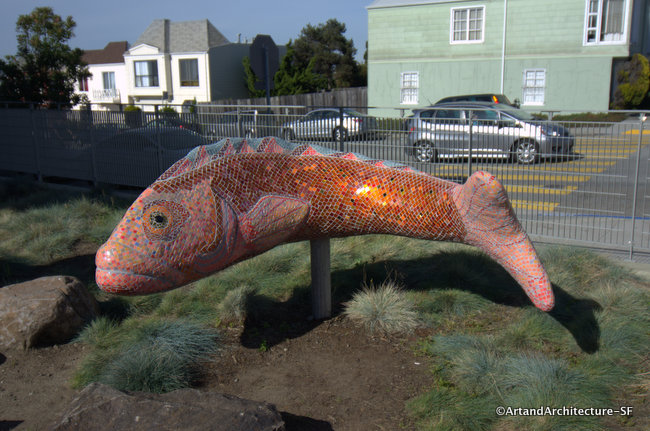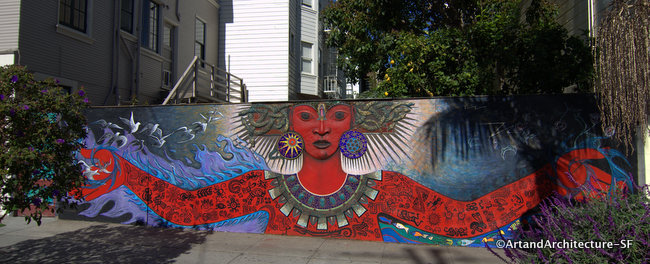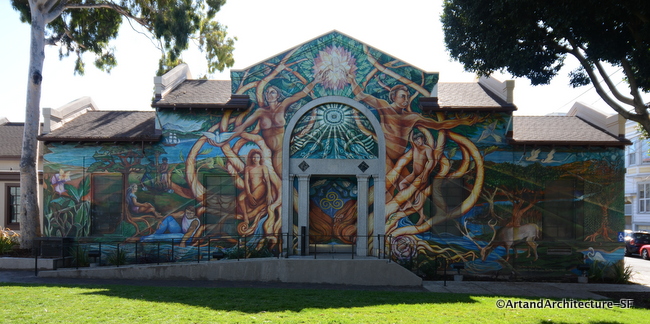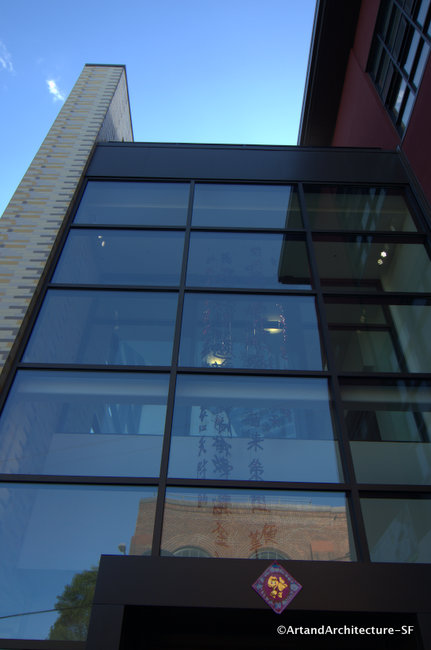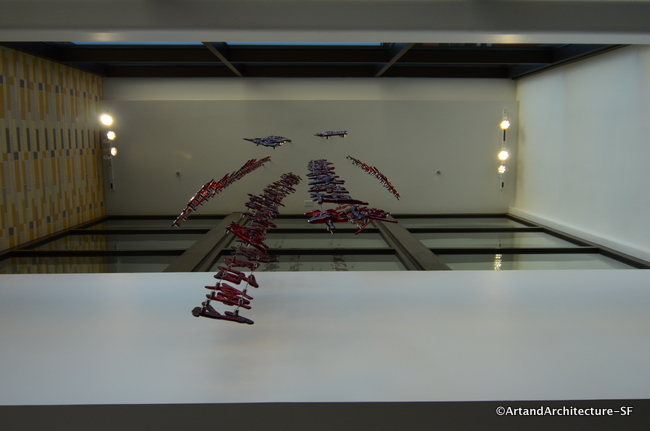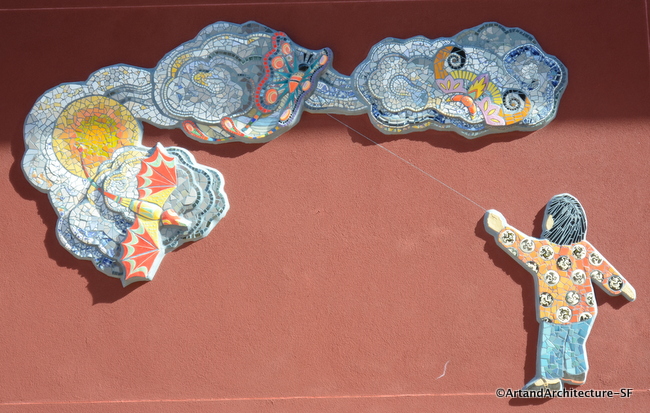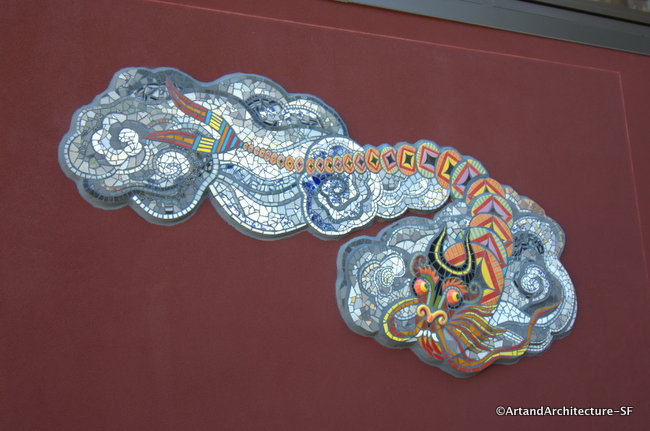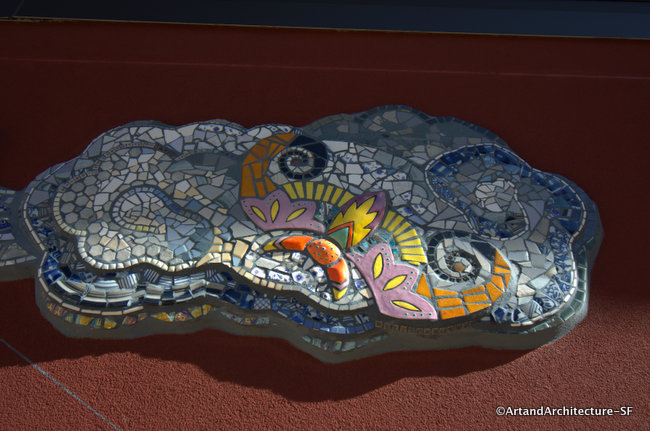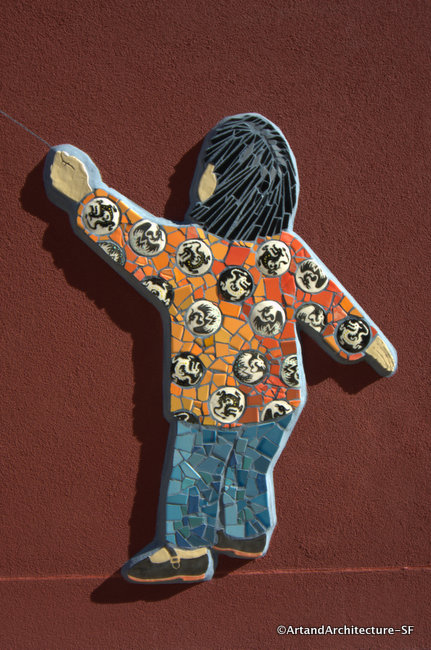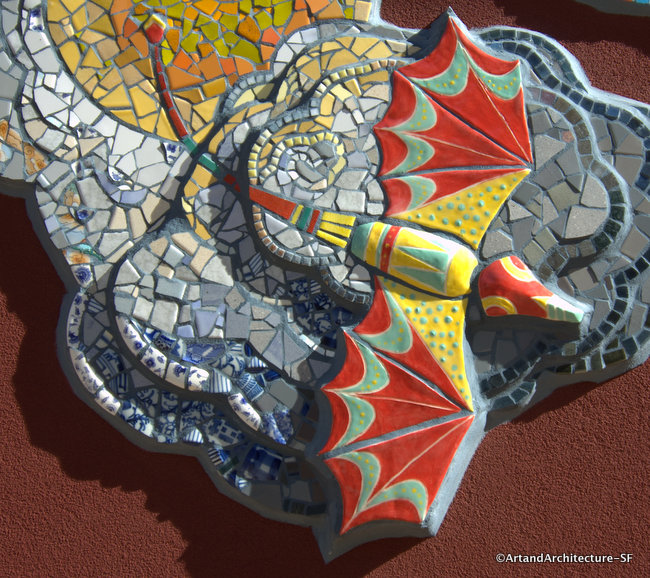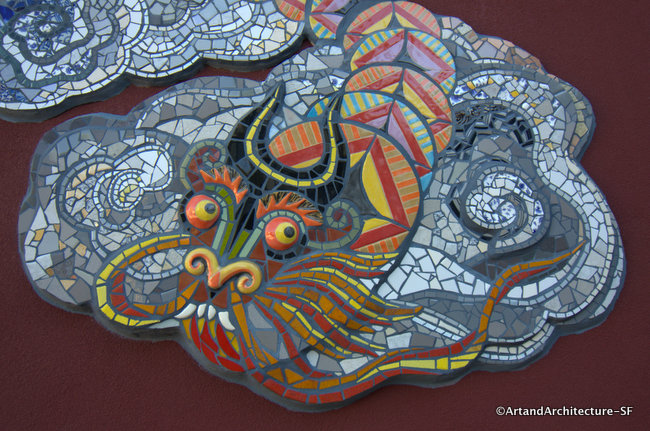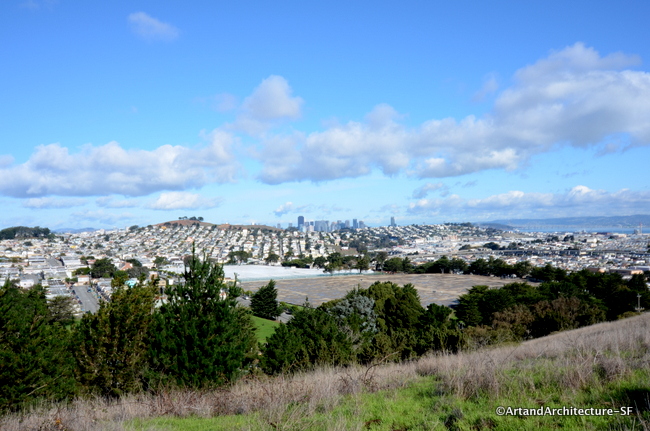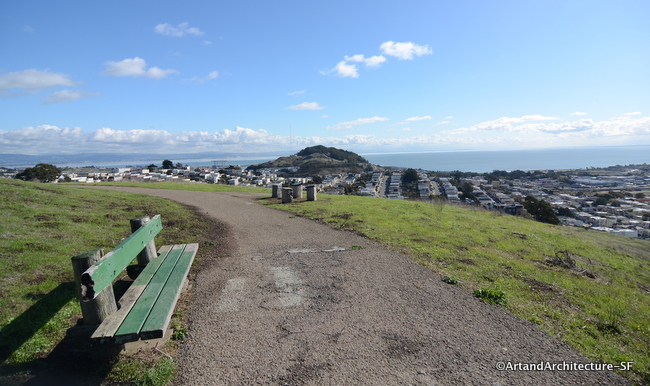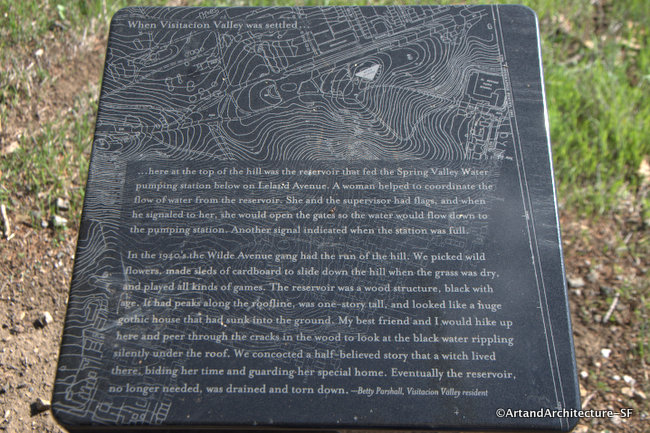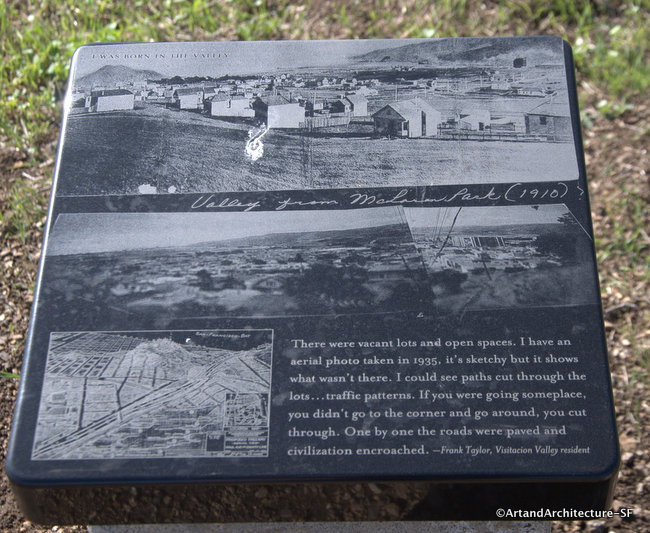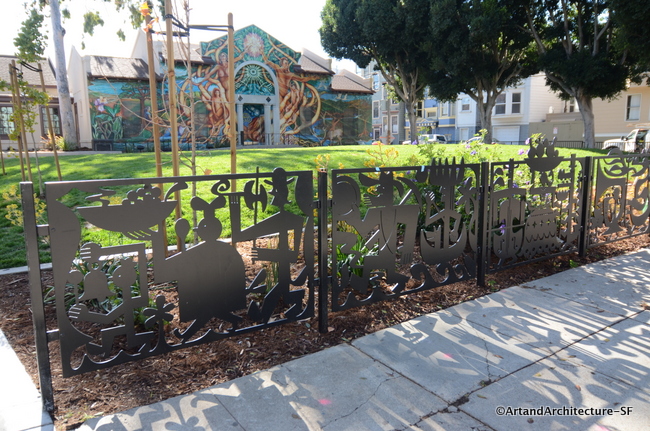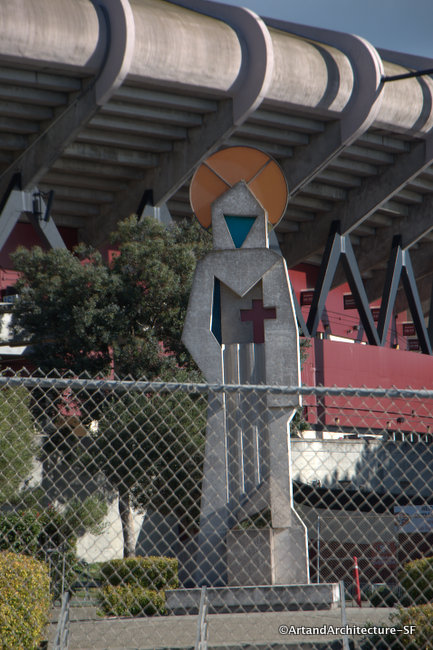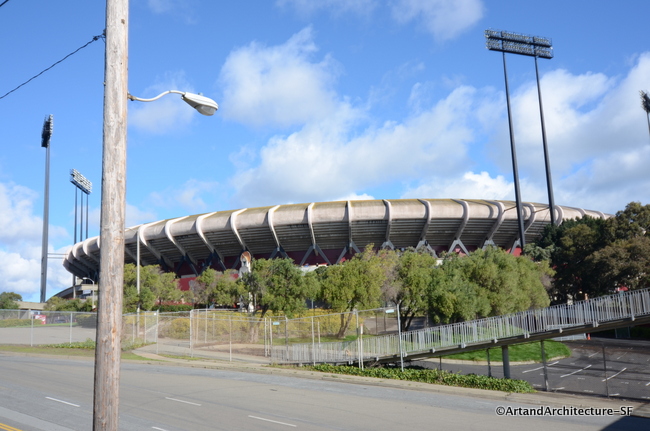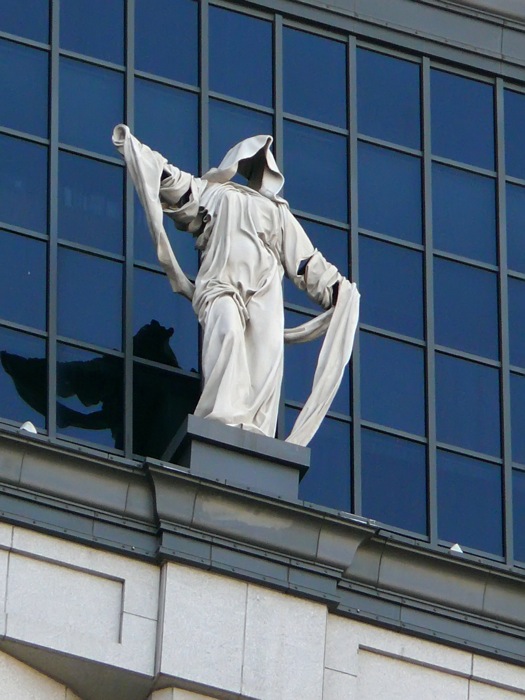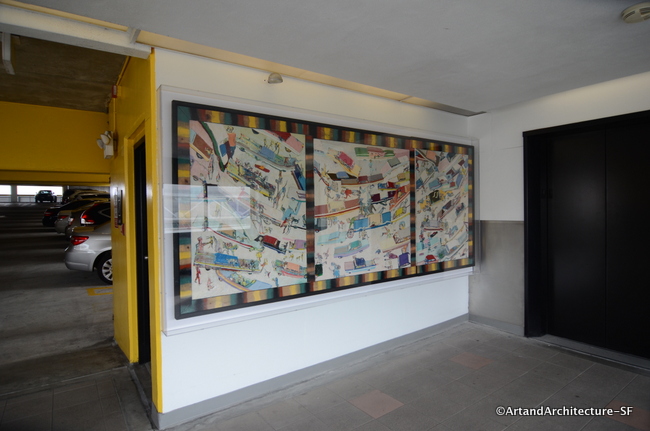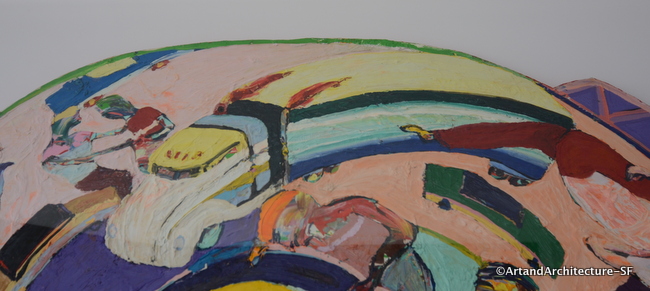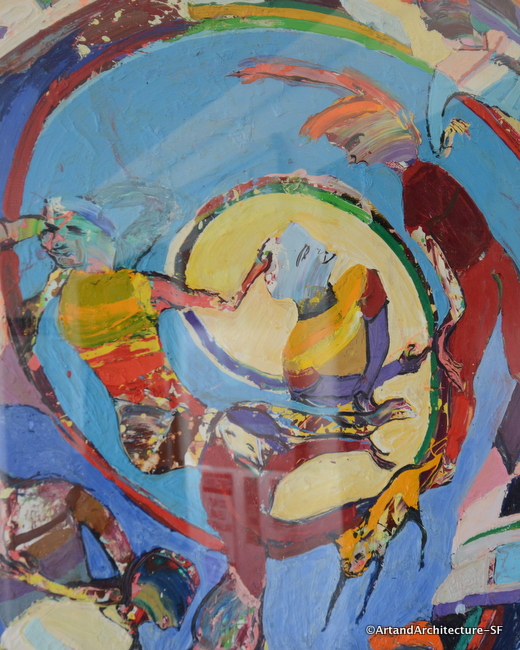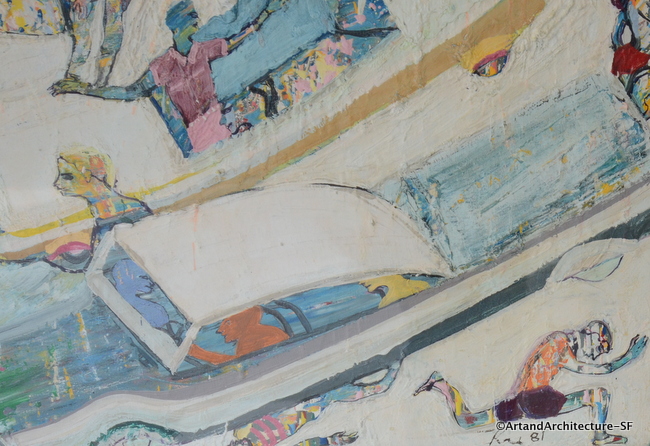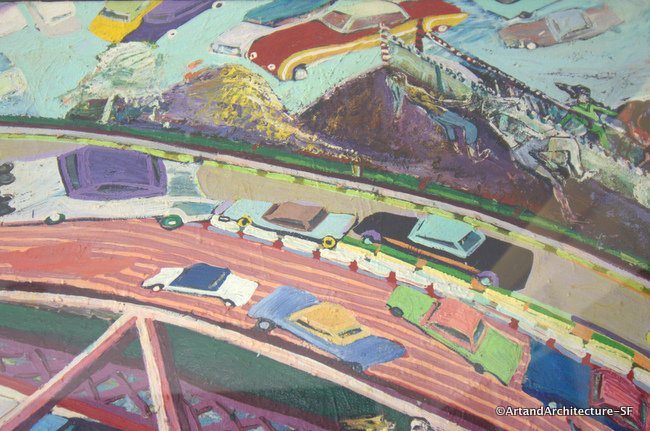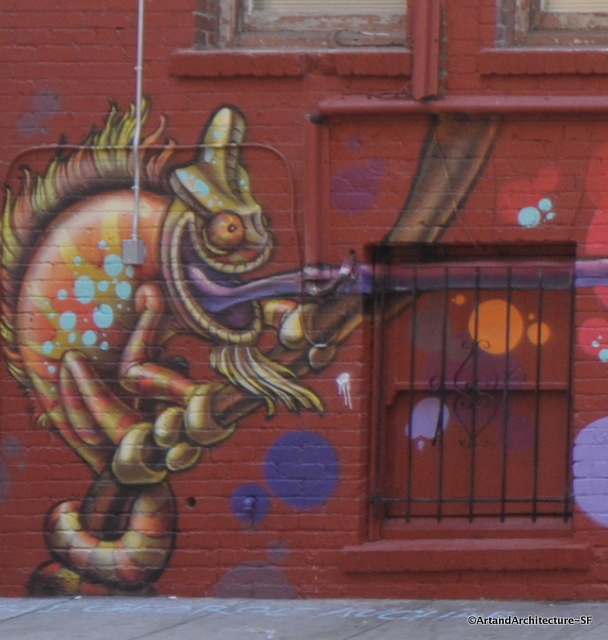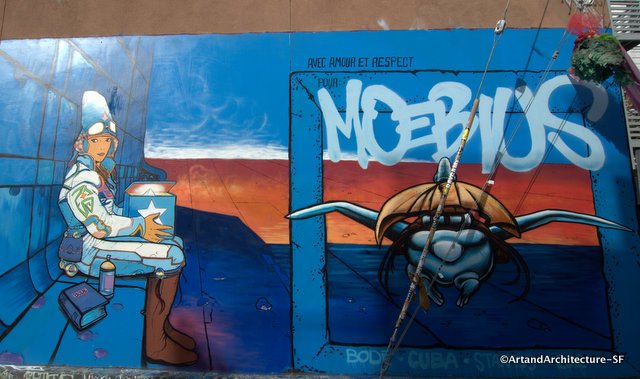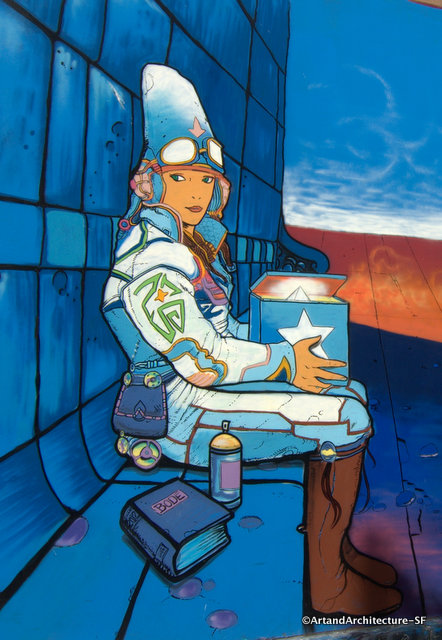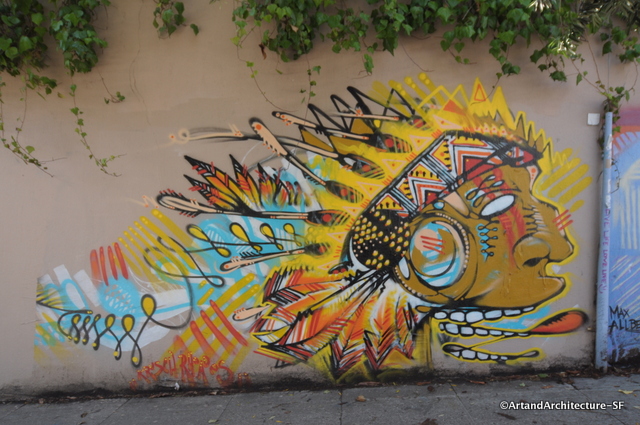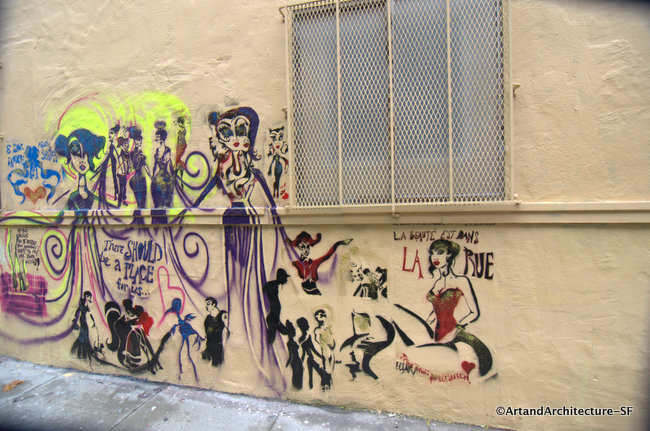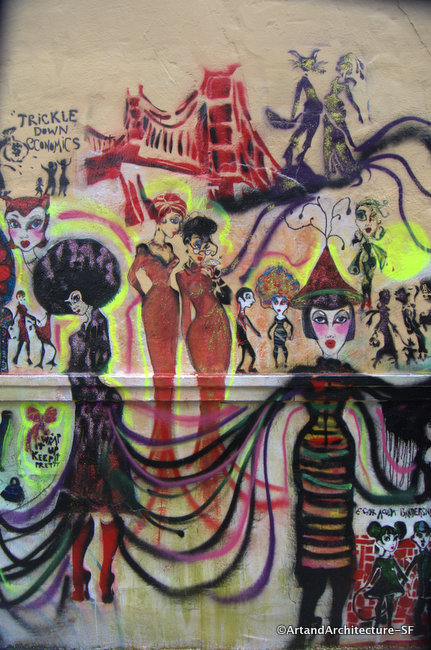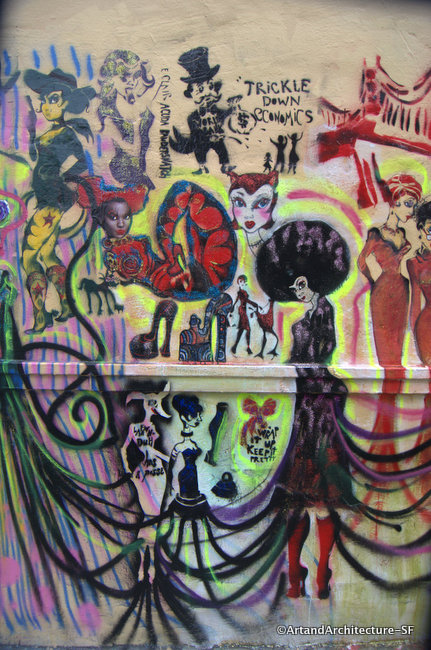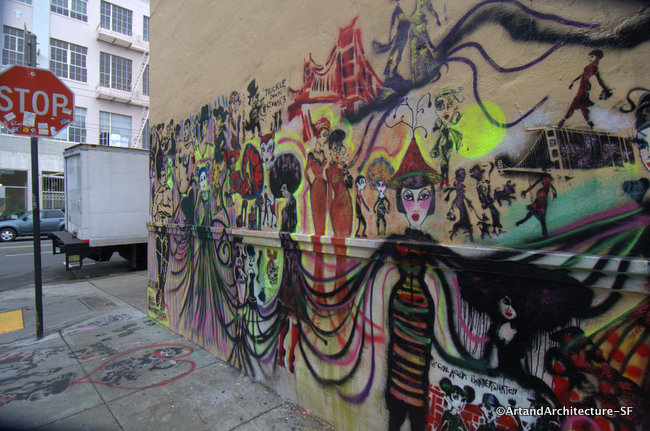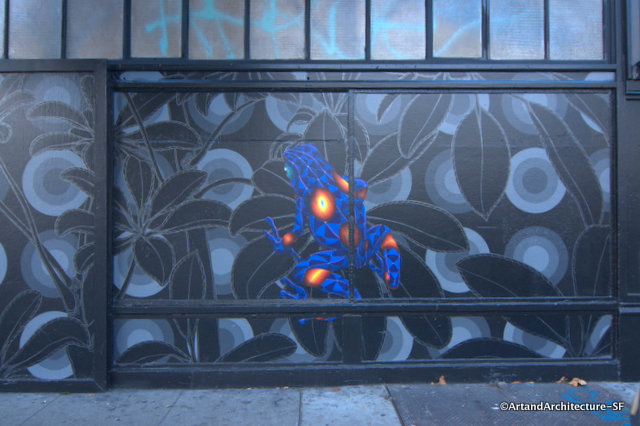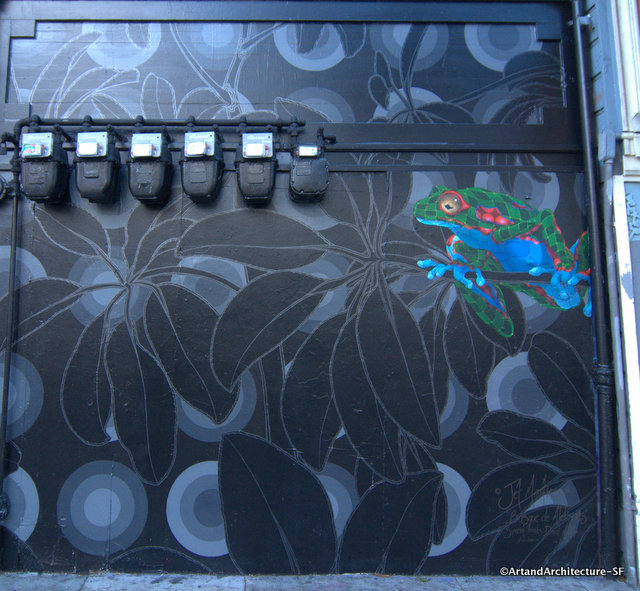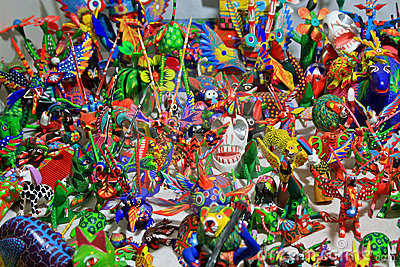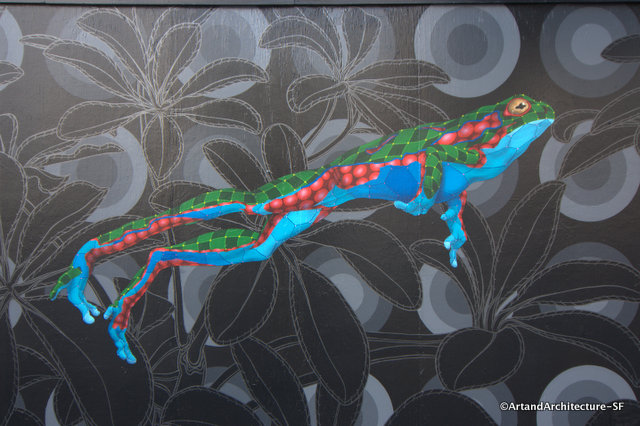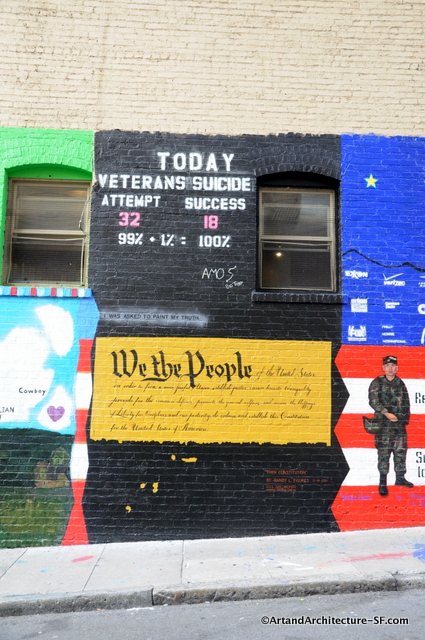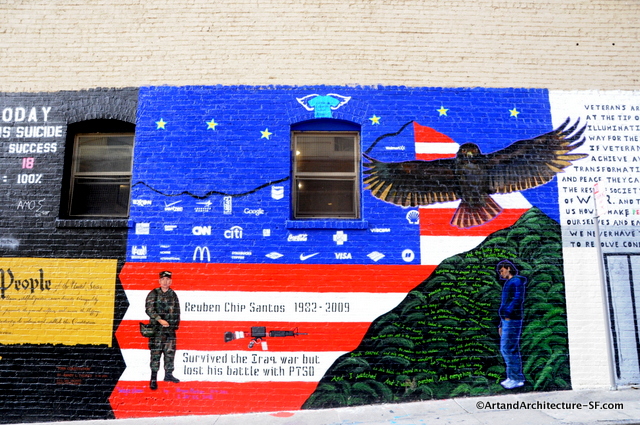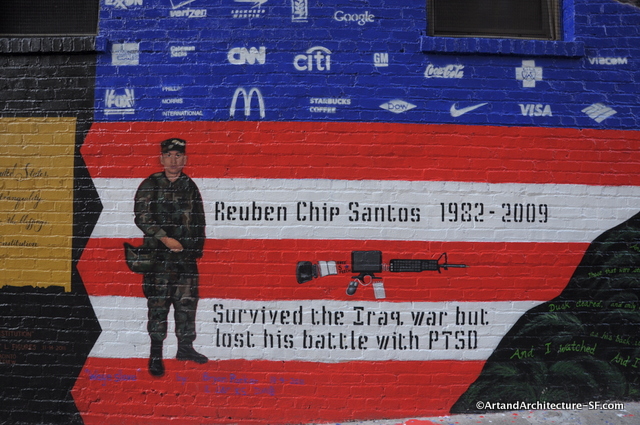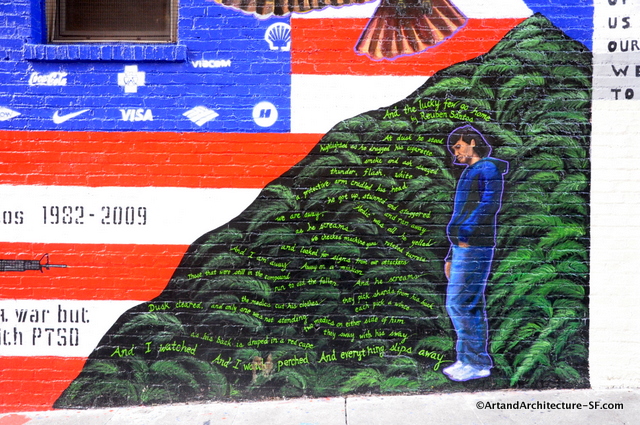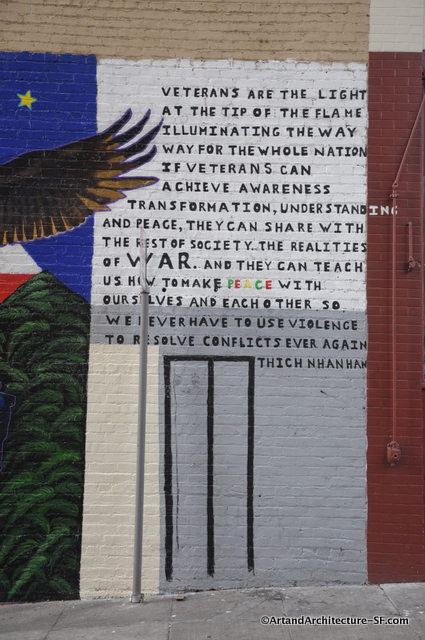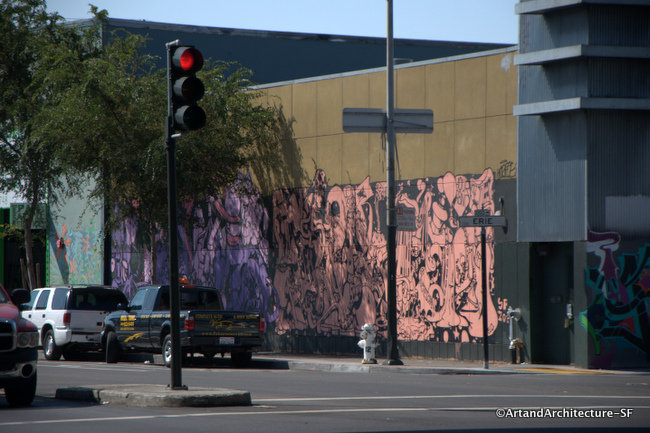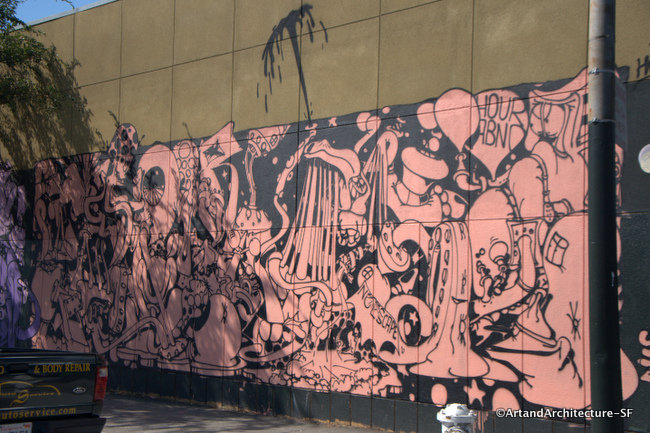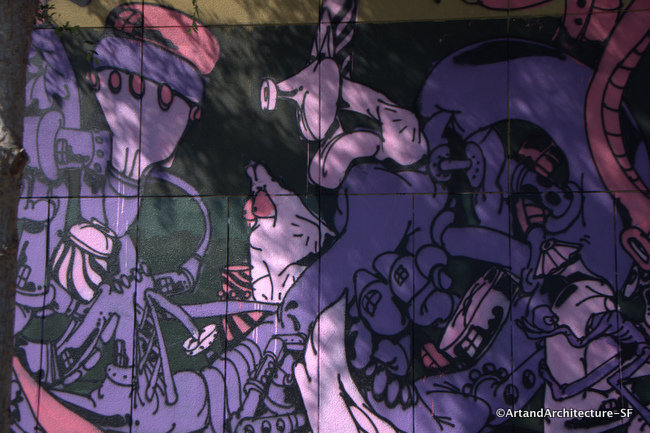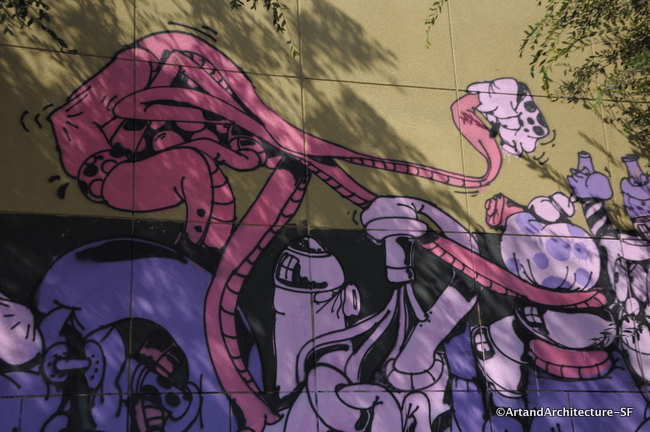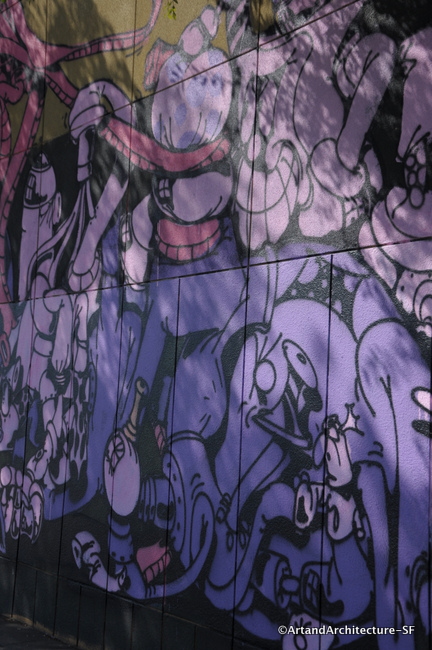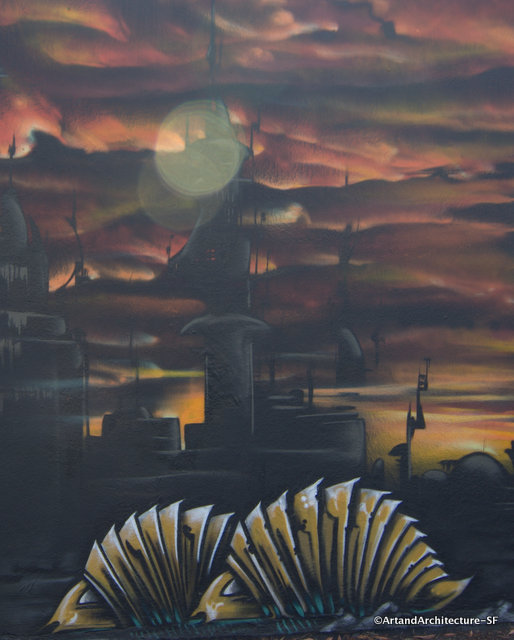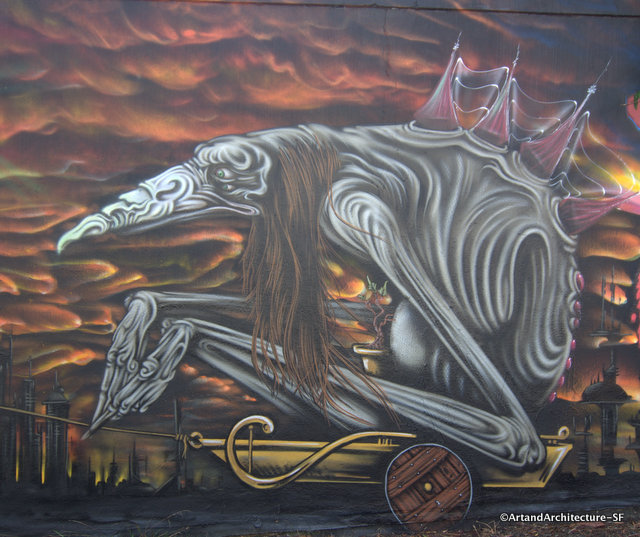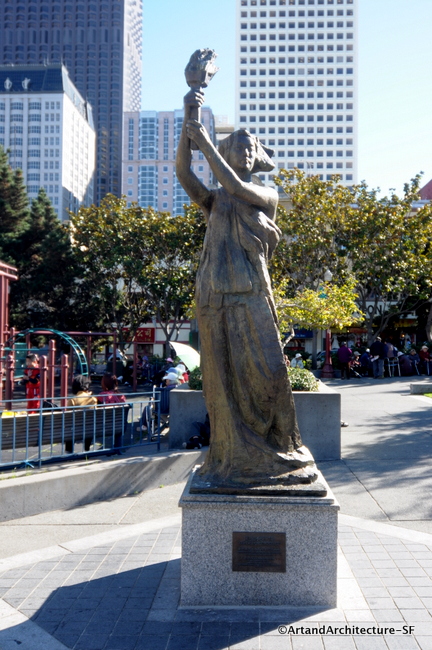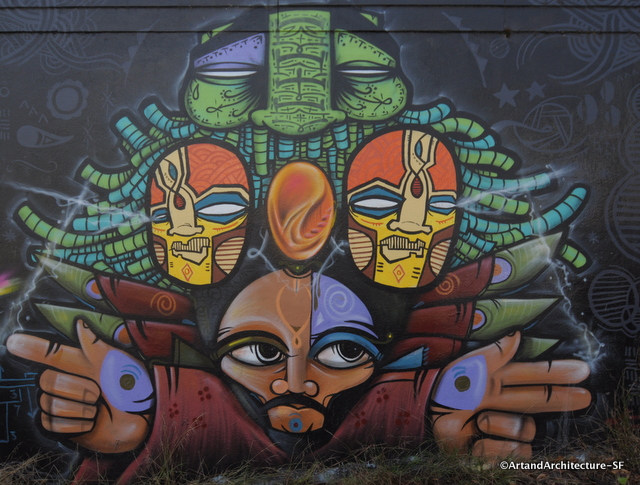Highway 101 -280 Interchange
Street Level

Freeway stantion paintings are starting to pop up around the country, this is the first one in San Francisco. The artist is Cory Ferris and the work was done in 2011.

According to a June 2012 article on SF Gate by Sam Whiting:
Cory Ferris is a 19-year-old who was a senior at Mission High School when she got the commission.
“I’m just really happy that I get to have my art on a column,” she says, unaware of its larger historic significance: This might mark the first time Caltrans has permitted an artistic interpretation on one of its freeway supports, though there are plenty of interpretations in the style of art that Caltrans doesn’t permit.
“A mural on a support column is a first,” says Caltrans spokesman Steve Williams. “It is a really good thing to have those kinds of art projects and stop the tagging.”
This totem pole, at Alemany Boulevard and San Bruno Avenue, is the first of three phases that will include a community garden and a second mural on a plywood fence, to transform this grim little plot into a grand gateway to the Portola district.
The intersection, technically called the Alemany Interchange, has been given the more alluring title “Alemany Island.” But it will be hard to shake its other name, “the MixMaster,” for all the ways it can spin a car round and round before spitting it out onto any number of roads and on-ramps. The idea is that people should at least have something pretty to look at and remember the Portola by, other than as a good place to get lost.
“I love the mural,” says Department of Public Works Director Mohammed Nuru, who lives in the Bayview and passes through this maze once a day. “It’s not something you see commonly, and for a city like San Francisco, it is perfectly fitting.”
Nobody was thinking of coloring the freeway pillar when Portola activist Lia Smith enlisted a horticulture class at City College of San Francisco to design a garden for the traffic island.

“The biggest barrier to the garden was the post in the middle of it, covered in graffiti,” says Smith, project manager for the Alemany Island Beautification Project. “Twenty-five students came down and said, ‘That thing is really ugly. How can you plant a garden with it looking like that?’ ”
The Portola Neighborhood Association raised $45,000 for the project – pillar, garden and fence mural – through the Community Challenge Grant Program. The grant covers the winning design, by City College student Davery Yim, and installation of 48 plywood art panels to cover the existing cyclone fence topped with rolls of razor wire.
The 48 panels, based on the neighborhood-specific board game Porto-Loteria, by Kate Connell and Oscar Melara, have already been painted. They sit in a garage awaiting fence repairs by Caltrans. The garden is also hung up, awaiting a water supply. Until next year, it will just be Ferris’ unmarked mural, and she wasn’t even the first choice to draw it. Smith first turned to her husband, fine arts painter Keith Ferris. When he failed to deliver, Smith turned to her daughter. “My mom wanted my dad to do it,” Cory Ferris says, “but he flaked.”
Her design features the San Francisco garter snake and the Mission butterfly, both endangered species indigenous to the Portola, which was once covered in greenhouses to supply the city’s flower trade. The concept was the easy part. The hard part was drawing it to scale so that it could be broken into little squares and put together on the pillar, like pieces of a puzzle.
The project ate up 60 hours and it would have been more, but Ferris is like the late artist Sol LeWitt in that she does not actually apply the paint to the surface. A crew from the Precita Eyes Muralists, along with local volunteers, climbed the scaffolding and worked from her detailed plans.
“I let them take a few liberties,” says Ferris, who stopped by to examine the finished product on her way to UCLA. “They made the butterfly look a lot better.”


